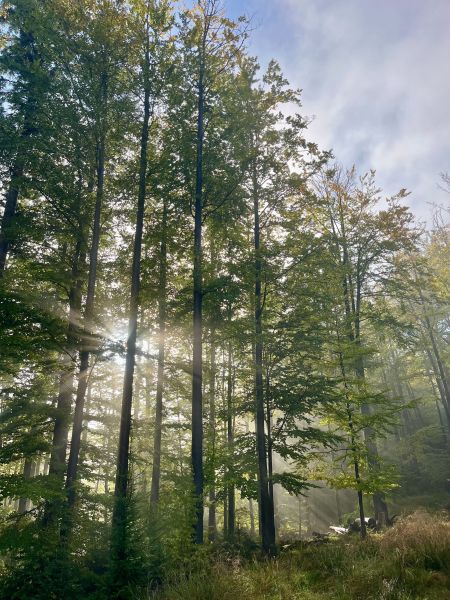A major new study published in Nature Communications has uncovered the global patterns linking weather and reproduction in perennial plants. The research, led by Valentin Journé, PhD and Prof. Michał Bogdziewicz from Adam Mickiewicz University, Poznan, analysed long-term seed production records from 746 populations of 331 species across all vegetated continents. The team found that temperature is the dominant cue for triggering reproduction, although its influence weakens in the wettest and driest climates.
Plants often reproduce in pulses—years of mass seed production followed by years of scarcity—a phenomenon known as masting. By examining decades of data, the researchers showed that in temperate and boreal zones, plants usually produce more seeds after warm years, while in tropical forests, reproduction peaks after unusually cool periods. This striking contrast means that global warming could amplify reproductive failures in the tropics, while making reproduction more regular—but less synchronised—in temperate forests.
“Our analysis shows that the same climatic force can have opposite effects in different parts of the world,” says Valentin Journé, PhD, lead author. “Tropical forests, which rely on rare cool spells to trigger flowering, may face widespread declines in reproduction as these events become even rarer.”
The study also found that plant species that show the most extreme seed production cycles—such as oaks, beeches, or some conifers—are the most sensitive to temperature fluctuations. “These hypersensitive species synchronise reproduction over vast areas,” explains Prof. Michał Bogdziewicz. “That makes them particularly vulnerable: even small shifts in temperature patterns can disrupt this synchrony and weaken the benefits of masting, like pollination success and predator satiation.”
The researchers warn that such disruptions could cascade through ecosystems. Many animals—from rodents to birds and large herbivores—depend on masting events for food, and reduced seed years may slow forest regeneration. “Masting shapes how forests feed and renew themselves,” adds Jessie Foest, PhD, co-author of the study. “Understanding its climatic drivers helps us foresee where ecosystems are most at risk under ongoing warming.”
By providing the first global test of long-standing ecological theories, the study offers a framework for predicting how plant reproduction will respond to changing climates. As Prof. Bogdziewicz summarises, “We are finally able to see the big picture—how weather links the lives of plants around the world, and how those links are now being tested by climate change.”
Journé V., Kelly D., Hacket-Pain A., Pearse I., Szymkowiak J., Foest J., Kondrat K., Oberklammer I. Pesendorfer M., Satake A., Bogdziewicz M. (2025) Weather drivers of reproductive variability in perennial plants and their implications for climate change risks. Nature Communications, https://doi.org/10.1038/s41467-025-64300-6
photo: Beech forest on Babia Góra by Jakub Szymkowiak, PhD.




